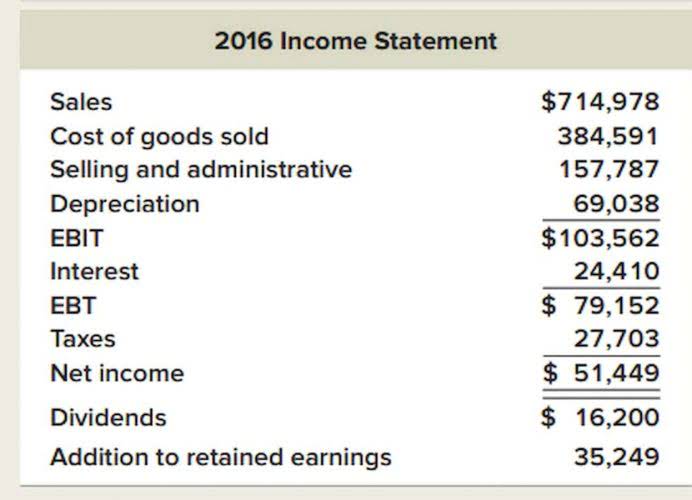Audit Evidence And Audit Testing 4
What is Substantive Testing and Why is it Critical in Audit?
Auditors can use data analytics tools and software to streamline the process, identify patterns, and focus on high-risk areas. Errors or omissions in documentation can lead to misunderstandings and misinterpretations, potentially affecting the audit’s integrity. Conversely, low-quality or questionable evidence can cast doubt on the entire audit, potentially leading to disputes and skepticism. Observation is where the auditor of the company observes the various activities of the clients and their employees before making any conclusion. The reporting phase brings together all previous audit work and turns findings into practical insights.
Advanced Techniques for Gathering Audit Evidence
This observation procedure is to test the existence of the client’s inventories counting procedures, not the accuracy of the client’s inventory. Also, it is useful to note that the inspection alone will not provide evidence about the rights and obligations. For this audit assertion, auditors may need to inspect the legal documents of the assets. For example, auditors may test the existence assertion of fixed assets by performing physical inspection of assets that are recorded in the fixed assets register. In addition to analytical procedures, auditors can obtain audit evidence using other types of audit procedures. From the perspective of regulatory bodies, there is a push towards standardization and clarity in what constitutes acceptable audit evidence.
Appendix A – Using the Work of a Company’s Specialist as Audit Evidence
This prevents situations where 90% of audit hours focus on testing but stakeholders only remember how you shared the results. The core team we work with usually includes the audit committee, board, CEO, and CFO. Other key players might be business unit leaders, external auditors, regulators, and investors. Getting everyone involved early helps match their expectations with our audit goals. Face-to-face meetings are a great way to get deeper insights than email – we can build relationships and read body language better. Also, it is important that auditors use audit sampling in a way that all sampling units in the population have a chance of being selected.
C. Observation of Control Procedures
With the increasing threat of data breaches and cybersecurity incidents, protecting audit evidence is paramount. Implementing robust data security measures, including encryption and access controls, can mitigate these risks. Statistical sampling involves using random sampling techniques to select items for examination. It provides a higher level of confidence that the results from the sample can be extrapolated to the entire population. When stakeholders, such as investors, regulators, and management, have confidence in the audit process, they are more likely to trust the audit findings and the financial statements.
This meant that revenue should be recognized over the period these services were provided, not at the point of sale, impacting the timing of revenue recognition. Effectively reporting audit evidence is the final, critical step in the audit process. It involves presenting the findings and conclusions in a clear, concise, and understandable manner to stakeholders, providing them with the information they need to make informed decisions.
Through the accounting system of the client, auditors can obtain all the information related to the financial statements. If the client uses a computerized accounting system, auditors can also use electronic procedures for obtaining audit evidence. While there are 8 types of audit evidence, some auditors only rely on 6 types of audit evidence. Which type of evidence auditors obtain for a specific item in the financial statements depends on the item itself, the assertion auditors are testing, the nature of the client, etc. Similarly, auditors cannot depend on the financial systems of the client to provide evidence for their work. While it is a part of the audit evidence process, it does not form sufficient appropriate audit evidence.
Lack of documentation standardization
- For example, auditors may use a re-performance audit procedure in the test of controls on the bank reconciliation procedure that the client already has done.
- From the perspective of regulatory bodies, there is a push towards standardization and clarity in what constitutes acceptable audit evidence.
- The auditor’s independent execution of procedures or controls that were originally performed as part of the entity’s internal controls.
- CAS 500.A6 Most of the auditor’s work in forming the auditor’s opinion consists of obtaining and evaluating audit evidence.
Notably, these lapses resulted in total material and pervasive misstatements of Rs 1,615.04 crore for CDGL, which were not identified or reported in the independent auditor’s report. Under the documentation, the auditor collects written documents like purchase invoices, sales invoices, policy documents of the company, etc., which can be internal or external. This evidence is more reliable as there is some proof in writing based on which the auditor is forming his opinion. Effective audit sampling involves a structured process to ensure that the selected samples provide reliable evidence and support accurate audit conclusions.
Documentary evidence
As per the Public Company Accounting Oversight Board (PCAOB) guidelines, the completed set of audit working papers should be compiled for retention within 45 days after the documentation completion or report release date. If applicable, include management’s response to the findings and recommendations. Physical examination is where the audit inspects the asset and counts them whenever required. Relevant Audit Evidence And Audit Testing information means there is some type of connection between the information and the objective of the procedure (i.e., does the information received make sense to support the procedure?).
- Paper 2.6 questions typically ask candidates to describe audit procedures, also known as ‘audit tests’ or ‘audit work’.
- Do not infer from seeing the word inquiry on its own that it means rigour is unnecessary.
- For example, auditors may perform the audit procedure on fixed assets addition by vouching a sample of new items in fixed assets register to the supporting documents.
- For example, in an environment in which management’s integrity and trustworthiness are high, the auditor may be able to place relatively more reliance on inquiry.
Audit procedures and sampling are essential tools used by auditors to gather sufficient and appropriate evidence to support their conclusions about an organization’s financial statements. Both techniques are crucial for ensuring the accuracy, completeness, and fairness of financial reporting. The International Standards on Auditing (ISA) 500 and ISA 530 provide guidelines on how auditors should perform audit procedures and apply sampling methods. This article explores the types of audit procedures, the principles of audit sampling, and best practices for applying these techniques in the audit process.
Example: test of controls for sales
In simple terms, substantive testing involves the testing of individual transactions and account balances to obtain sufficient and appropriate evidence regarding their accuracy and completeness. It is not unusual for audits to be redesigned during the examination stage as teams encounter unforeseen difficulties in gathering sufficient evidence of appropriate quality. Auditors have to be alert to any signs that the evidence-gathering process may not be achieving the level of assurance required for the audit assignment and take appropriate corrective action. If there are any potential amendments to the audit program, communicate these changes and raise any other issues, on a timely basis, with the senior members of the audit team. CAS 500.A27 Responses to inquiries may provide the auditor with information not previously possessed or with corroborative audit evidence. Alternatively, responses might provide information that differs significantly from other information that the auditor has obtained, for example, information regarding the possibility of management override of controls.






